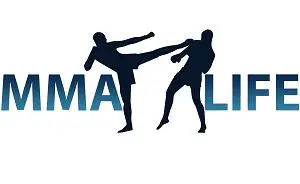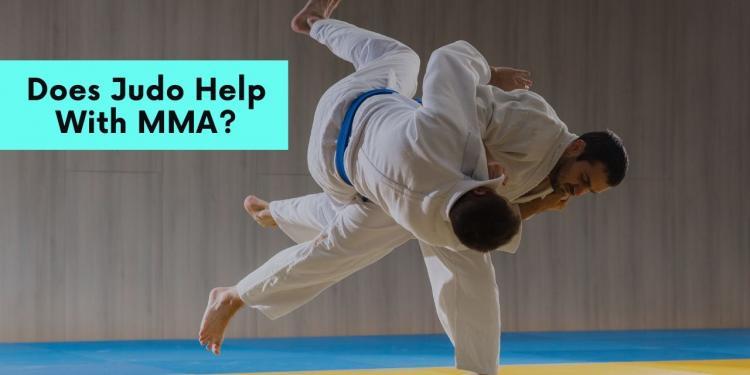Judo is known for its flashy throws and takedown techniques. In addition to being proficient at utilizing these skills to control where the actions occurs, a judo practitioner’s (judoka) aggressive and explosive movements can overwhelm their opponents. For this article, we will be discussing how learning judo could greatly impact your success in mixed martial arts (MMA). Furthermore, the article’s content will mainly focus on the throwing aspects of judo.
Adapting Judo to MMA
Hand Positions and Grips
First off, it is important to consider how judo is traditionally taught and what features need to change in order for it to excel in MMA. The initial adjustment required for all judoka training MMA is how they must adapt their hand position and gripping habits to the standard MMA attire. As you watch the judo competition highlights below, you will see how each competitor grabs and use their opponent’s uniform (gi) to maneuver, off balance and take them down.
To accommodate for the lack of gi attire, a judoka must train to rely on underhooks and overhooks from the standing clinching position. In addition to that, they must continuingly spar throwing techniques without the gi attire to get used to the lack of friction normally associated with the judo uniform and how the opponent may slip out of their grasp.
Exposure From Failed Attempts
One major danger with Judo throwing attempts are the bad positions you may end up at if your attempt fails. For example, a hip throw using a head and arm grip may leave your back exposed for the taking. In judo competitions, a judoka could use their grip on the gi collar behind the head to prevent this occurrence. A simple adjustment is to attempt the hip throw with a underhook grip instead. This underhook may act as a barrier if you fail to load the opponent on your hips properly for the throwing technique. It is also crucial for a judoka to practice following through with their throws and landing in a dominant position. In judo competitions, a judoka may get the win via ippon, but they are not always landing in a position that is ideal for MMA. Many of these ending positions would leave openings for the opponent to scramble to their feet or allow the opponent to get on top.
Importance of Learning to Strike
To succeed in MMA, it is important to be a well-rounded athlete. You must have competent striking skills that grants you the ability to work your way into the clinch without eating a barrage of punches and kicks. Once you obtained the desired clinching position, you could use your skills to control their balance and position.

Benefits of Judo for MMA
Judo utilizes an upright stance that is commonly seen during standing clinching scenarios in MMA. A judoka’s acute awareness of breaking down their opponent’s centerline, getting them off balance and then following up with a slick takedown technique allows them to control where the actions occurs. Many MMA competitors have a wrestling background or adopts wrestling as their takedown skillset of choice. In the article “How to Become a Better Grappler,” I posted a video showing a judoka successfully applying judo techniques to consistently take down wrestlers in their own competitions with various leg trips and foot sweeps.
Judo in Professional MMA Matches
The video clips provided below display examples of judo techniques being used in MMA. Warning: The music in these videos may be loud and obnoxious.
Hector Lombard vs. Jake Shields
Hector Lombard is a decorated judoka who has competed and received medals from multiple International Judo Federation events. His opponent in the highlight video below is Jake Shields. Jake started wrestling at an early age and is known for his submission wrestling prowess. In this video, you can see Hector lombard utilizing his superior judo skills to ragdoll and take Jake down with ease. The video also shows him using the kesa gatame position or judo mat hold technique after his hip throw to control his opponent on the ground.
Ronda Rousey Dominating the Competition with Judo
Ronda Rousey is an Olympic judo medalist that has shown the ability to consistently get takedowns from the standing clinch position and is notorious for her ridiculously fast armbars. The video displays Ronda ability to dominate her opponents with a hip throw technique that utilizes the head and arm grip. It also exhibited her outside leg trip technique as she pressured her opponent backwards. Upon taking her opponent down, she will either go straight to an armbar submission attempt or throw ground strikes to force the opponent to be on the defensive before going for the armbar.
Rick Hawn’s Shoulder Throw
Rick Hawn is another former Olympic judoka that is able to translate his judo skills to MMA. The video content below shows his fight with Levon Maynard. When Rick went for a head kick, Levon was able to block Rick’s kick and shuck it off. This action left Rick in a bad position where his back was exposed. Before Levon was able to jump on Rick and obtain back control, Rick got up and immediately took Levon to the ground with a shoulder throw. Rick proceeds to finish the fight with vicious ground and pounds.
Judo Throws in MMA
The subsequent video is a compilation of different professional fighters pulling off judo takedown techniques in MMA. It proves that you do not have to be a high caliber judoka like those in the previous videos to implement judo techniques successfully in MMA and be effective with it.
Corey Devela’s Devastating Judo Throw
Corey Devela shows the devastating effect a perfect judo throw can have on the opponent. The video is setup at the minute mark where both Corey and his opponent, Joe Riggs, are clinching up on the cage. As Joe pushes Corey backwards, Joe pummeled for double underhooks which normally spells trouble for most people in Corey’s position. Joe attempts an unsuccessful outside leg trip that gets countered by Corey judo skills. Corey’s lands his full weight on Joe and immediately follows up with ground strikes. Joe tapped out, not due to Corey’s strikes, but because of the pain felt in his lower back from the throw.




